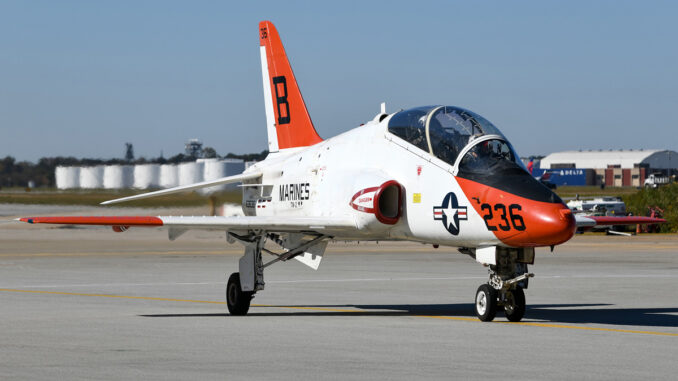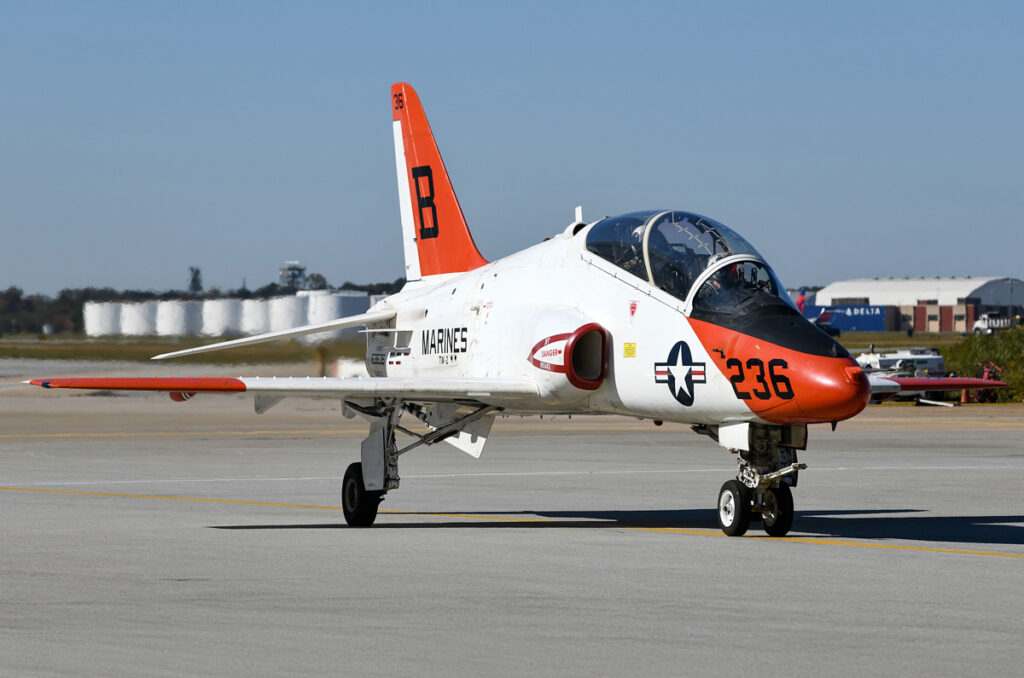
The US Navy is postponing the replacement of its T-45 Goshawks, which have accumulated a million flying hours since 1991. Technical deciphering.
In brief
The US Navy has reached a significant milestone with its T-45 Goshawk trainer aircraft, accumulating one million flying hours since 1991. The delay in replacing the T-45 is due to an internal debate over the need for the successor to take off and land on aircraft carriers. Initially scheduled for retirement before the end of the decade, the fate of the T-45 is now uncertain, affecting the Navy’s training plans.
One million flying hours: a remarkable achievement
Since entering service in 1991, the US Navy’s T-45 Goshawks have accumulated an impressive total of one million flying hours. This statistic represents around 114 years of continuous flying time, demonstrating the robustness and reliability of these training aircraft. Each year, these aircraft have trained hundreds of pilots, ensuring the readiness and effectiveness of the US Naval Air Forces. The celebration of this milestone at Naval Air Station Kingsville in Texas testifies to the importance of this programme for the Navy.
The T-45 Goshawk, derived from the BAE Systems Hawk, is specifically modified for naval operations, including structural reinforcements and specific systems for aircraft carrier catapults. This ability to operate from aircraft carriers is crucial to the training of naval fighter pilots. In comparison, civilian training programmes often use simpler aircraft such as the Cessna 172, which have neither the same requirements nor the same capabilities.
The debate over the requirements of the T-45’s successor
The replacement of the T-45 is currently generating debate within the Navy, mainly around the question of whether the new aircraft should be able to operate from aircraft carriers. This requirement adds significant technical constraints, particularly in terms of weight, durability and cost. The aircraft must be reinforced to withstand violent landings and the forces generated by launch catapults.
The requirement for aircraft carrier capability increases not only development costs but also maintenance costs. For example, the cost per flying hour for an F/A-18 Super Hornet, an operational carrier-based fighter, is estimated at around €24,000, compared with around €2,000 for civilian trainers. The decision not to include this capability could lead to substantial savings, but could also limit the quality of pilot training.

Consequences of the replacement delay
The postponement of the T-45 replacement has a significant impact on Navy pilot training. Aging Goshawks are becoming increasingly expensive to maintain. Spare parts are becoming scarce and maintenance time is increasing, reducing the availability of aircraft for training missions. At the same time, new generations of pilots may not receive full training in techniques specific to aircraft carriers, potentially compromising their operational effectiveness.
The delay is also affecting relations with industrial partners. Boeing, which collaborated with the Navy on the T-45, could see its contracts impacted, and prolonged negotiations could result in additional costs. This could also delay the development of other priority projects for the US defence industry.
Future prospects and implications for the Navy
Despite the challenges, the Navy continues to explore several options for replacing the T-45. One potential solution could include the use of advanced simulators to compensate for some of the training capabilities at sea. Modern simulators can realistically reproduce aircraft carrier take-off and landing conditions, offering a cheaper partial alternative.
However, simulation cannot totally replace real experience. Pilots need to be able to deal with the unexpected and environmental variables they encounter only in real conditions. Therefore, even with the increased integration of simulators, an aircraft capable of operating from aircraft carriers remains a strategic necessity.
Ultimately, the Navy must balance costs, training requirements and operational capabilities in its final decision. The replacement of the T-45 is crucial not only to maintain the effectiveness of pilot training, but also to ensure that the naval air fleet remains ready to respond to all potential threats. The decision taken will have a lasting impact on both pilot training and the Navy’s overall defence strategy.
War Wings Daily is an independant magazine.